
|
|
|
|
|
do
|
|
ІЯЗ III
|
1 Mi Г? :!
|
|
• “"j. M
|
|
|
1 ‘ 3- R
_чуи
|
11 IE І
|
|
Ip |j
|
|
|
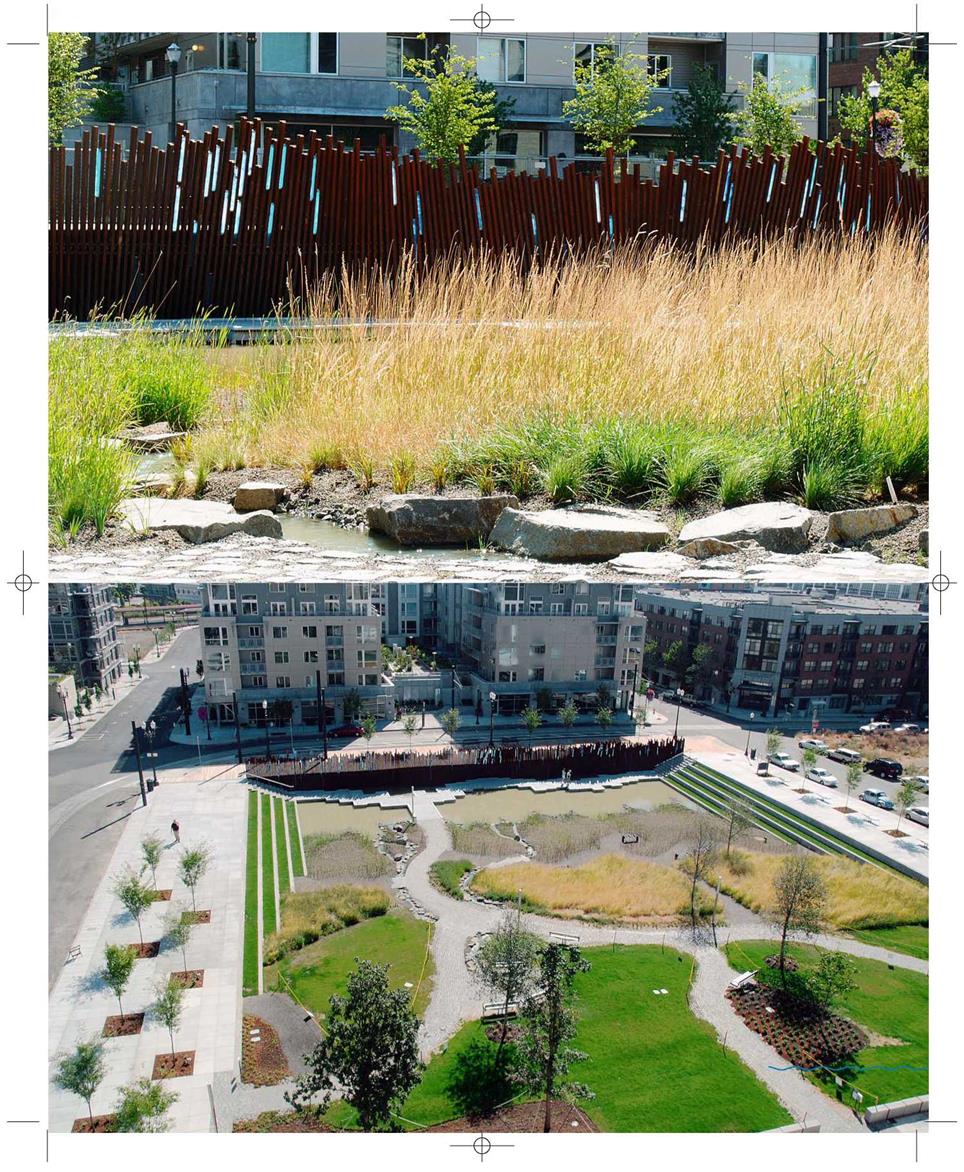
|
Tanner Springs Park, Portland
|
|
|
With surgical artistry, the urban skin of one downtown block, 80 x 80 metres (200 by 200 feet) is peeled back. Time is reversed and the story of land development wound back to predevelopment days. The park is like a view port to the past. The long forgotten wetland habitat is restored to the full glory of its plants and animals. Little springs bubble up at the top of a large open grassy meadow, trickling down to a wetland pond, sunken 1.8 metres below street level. A floating pontoon crosses the water, literally swimming across its invisible and varying depths. Symbolic of the old city fabric, historic railroad tracks form a wave-wall along one side of the pond. Called the ‘Art Wall’, there is a harmonious contrast between the static strength of the rail tracks and the lithe and flowing movement of the wall as it oscillates in and out, the top also rising and falling. The verticality of the rail tracks is surprisingly filigree. The movement of the wall is doubled in the reflection in the water. Lawn terraces run down the two sides of the park, providing lots of lunch-time seating and vantage points to enjoy the park.
|
|
|
Children absorbed in play. The park was adopted by children straight from the start.
|
|
|

Events at the official park opening were much enjoyed by the public.
|
|
|
A spring trickles across the biotope, meandering into the water.
|
|
|
Oscillating historic railroad tracks form the Art Wall, a ‘skin from the past.
|
|
|
A planting succession from dry to wet follows the slope of the park down to the water.
|
|
|

Space for contemplation in the middle of a bustling city
|
|
|
Informal, paved paths lead into the park, creating flowing transitions, a design theme found throughout the park.
|
|


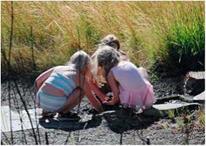

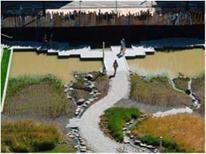
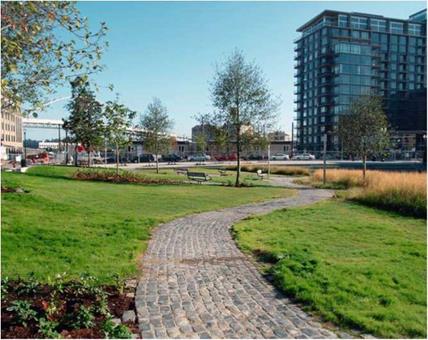

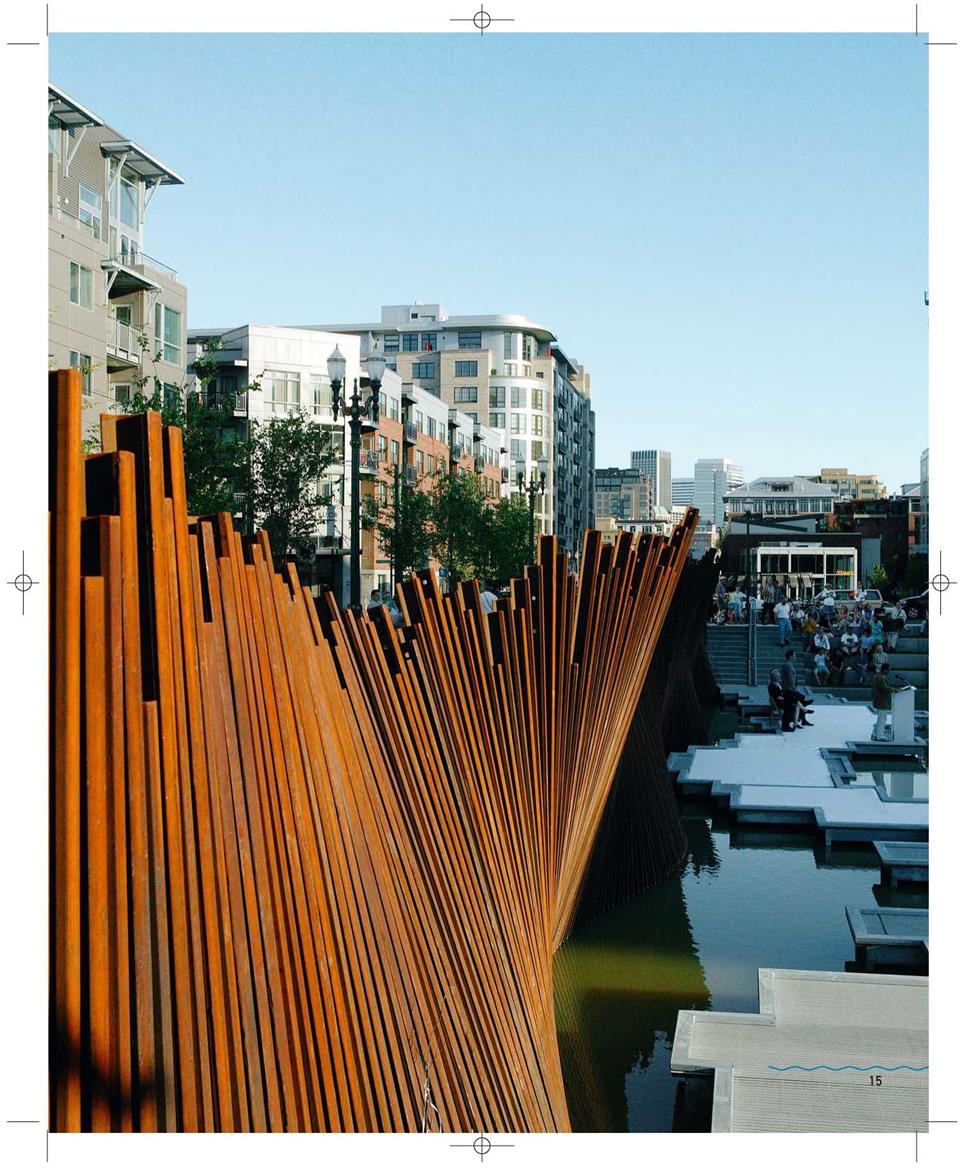 E_01_a_dreiseitl_001-041_16 19.09.2005 10:51 Uhr Seite 15
E_01_a_dreiseitl_001-041_16 19.09.2005 10:51 Uhr Seite 15
|
Tanner Springs Park, Portland
|
|
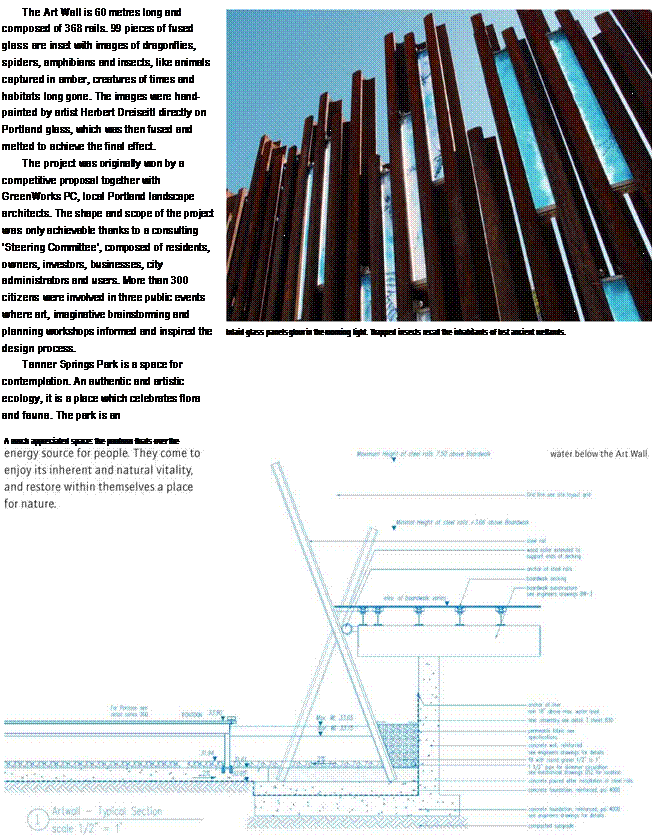 |
|

The swinging Art Wall, made from recycled railroad tracks, as seen from the Boardwalk.
|
|
|
|
|
|
|

The seating steps are a place for lingering, relaxing and chatting and give a formal frame to the wetland park.
|
|
|

In a special fusing technique using Portland glass, hand – painted insects are trapped in glass and inlaid between the old railroad tracks.
|
|

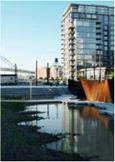


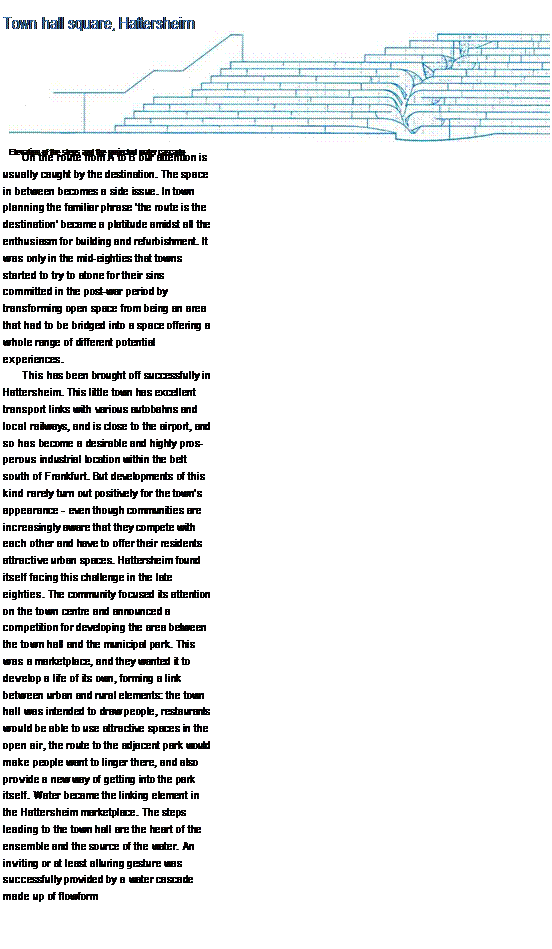 |
|
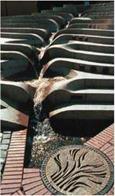
The water pulsates its way gradually from step to step, falling into a specially cast outlet.
|
|
|
The flowing water intertwines with the marketplace. Cafes and shops use the area as a foyer.
|
|
|
The individual elements are placed and assembled to the precise millimetre. Each stone is hand-crafted and produced individually.
|
|

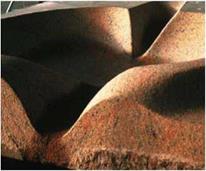
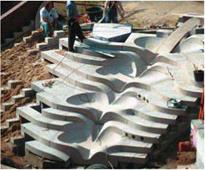
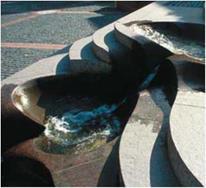


|
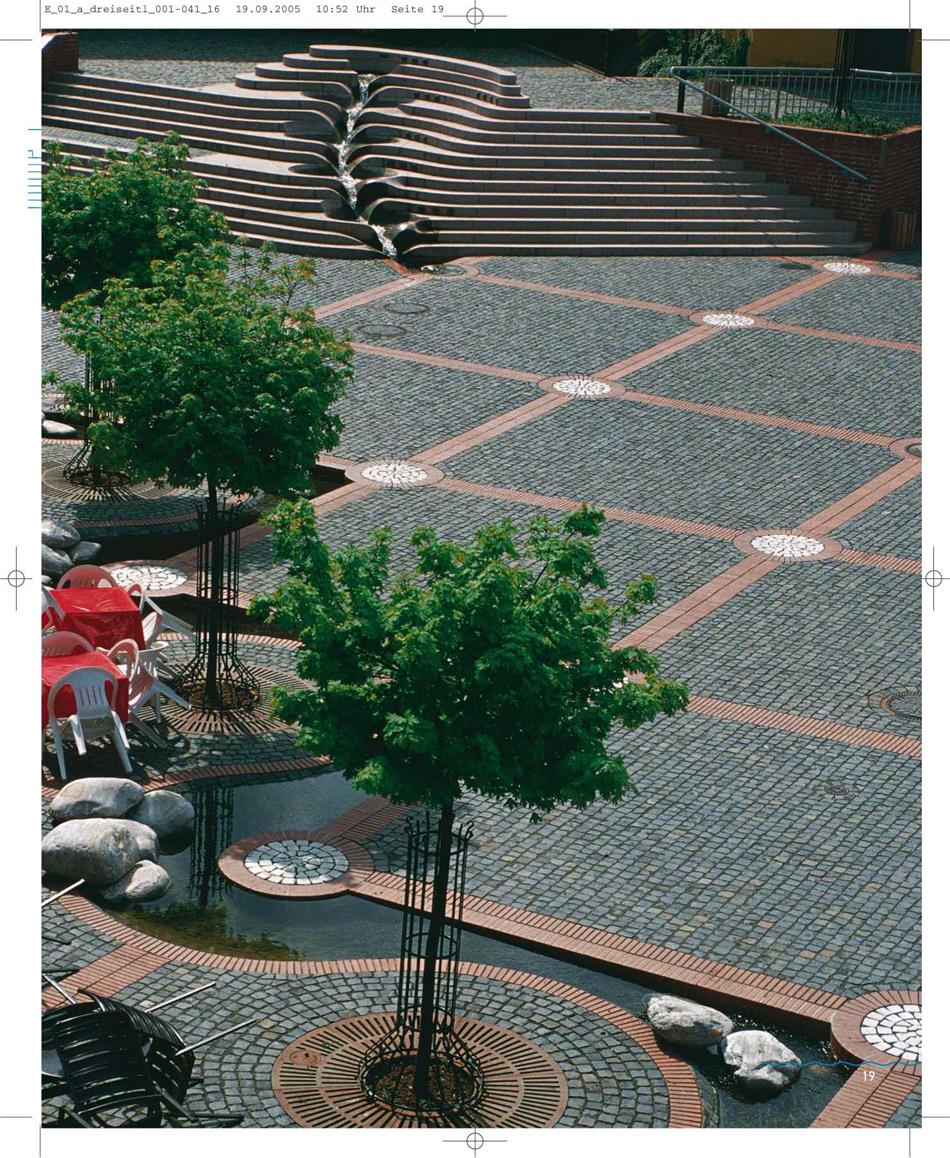
|
|
|
|
Cities are expanding worldwide. Natural spaces such as forests, meadows and wetlands are being consumed and displaced. Quietly and permanently, an insatiable appetite for land is destroying the living spaces of sensitive wild animals and plants. In contrast, the recycling of abandoned industrial land for new mixed downtown uses is space effectively and ecologically used. The City of Portland, Oregon, chose to go down this ecological path with the regeneration of an old, industrial downtown city neighbourhood, the Pearl District.
Formerly a wetland, the Pearl District was bisected by Tanner Creek and sided by the broad Willamette River. Rail yards and industry first claimed and drained the land. Over the past 30 years, a new neighbourhood has progressively established itself – young, mixed, urban and dynamic, today the Pearl District is home to families and businesses. As the district expands into the last of the rail yards, the City of Portland engaged Atelier Dreiseitl to design a new park to bring green space into this previously industrial area.
|
|
|
Citizens presented their own ideas and opinions at several public workshops. Key design aspects were identified and developed during the workshops.
|
|
|
View towards the Art Wall. The inlaid glass pieces are an echo of the delicate grasses in the foreground.
The park seen from a neighbouring building. Property values have increased since construction.
|
|
|

The floating pontoon is the ideal setting for performances in the park.
|
|
|
Overflow
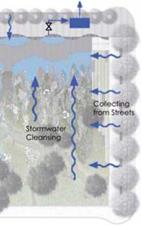
|
|
|
The sustainable water concept entails the collection of rainwater from adjacent streets and other paved surfaces.
|
|


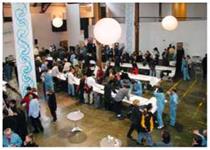
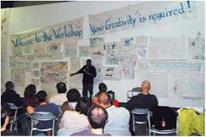
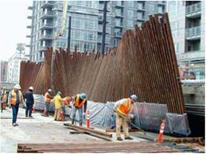





![]()





![]()
 E_01_a_dreiseitl_001-041_16 19.09.2005 10:51 Uhr Seite 15
E_01_a_dreiseitl_001-041_16 19.09.2005 10:51 Uhr Seite 15
![]()

![]()
![]()

![]()



![]()
![]()
![]()






![]()


![]()





![]()
 E_01_a_dreiseitl_001-041_16 19.09.2005 10:51 Uhr Seite 15
E_01_a_dreiseitl_001-041_16 19.09.2005 10:51 Uhr Seite 15
![]()

![]()
![]()

![]()



![]()
![]()
![]()






![]()